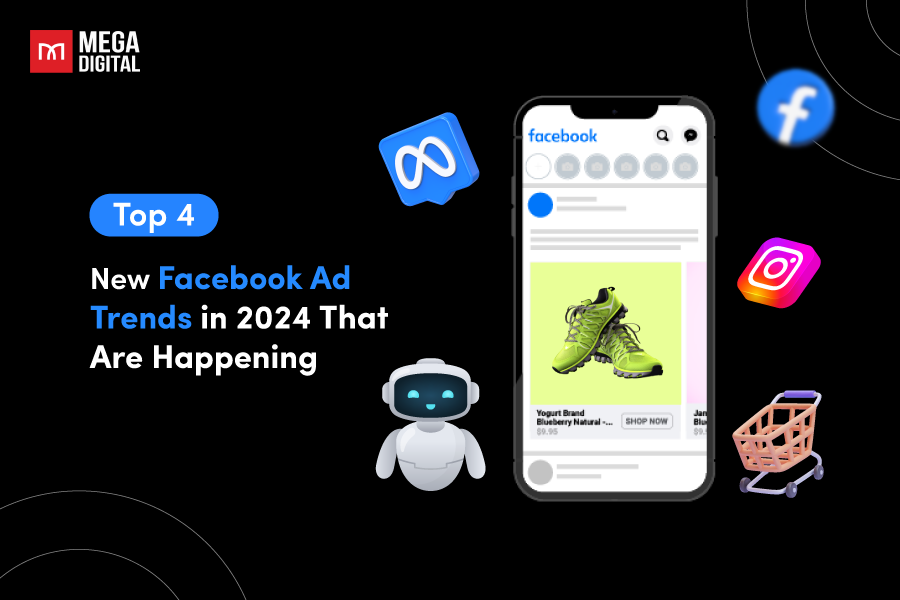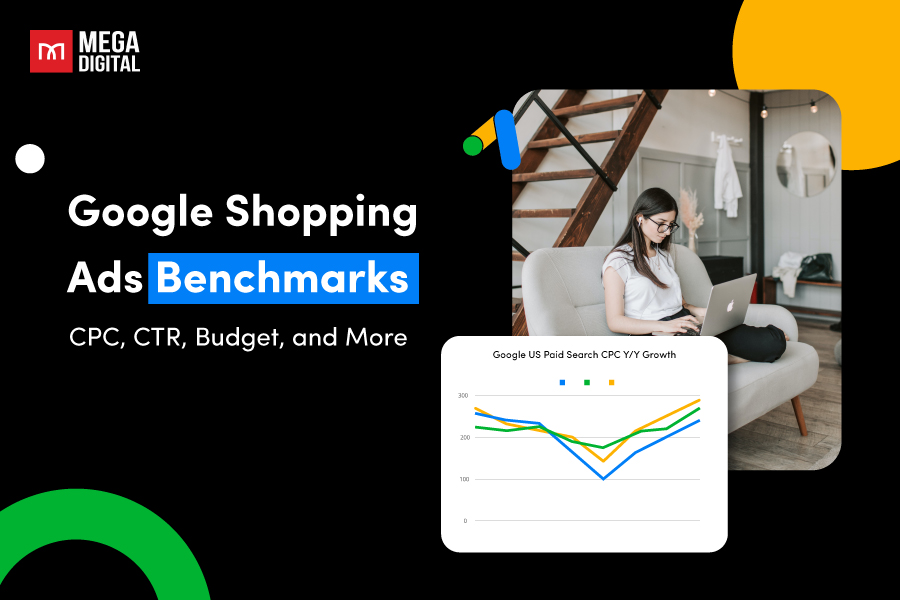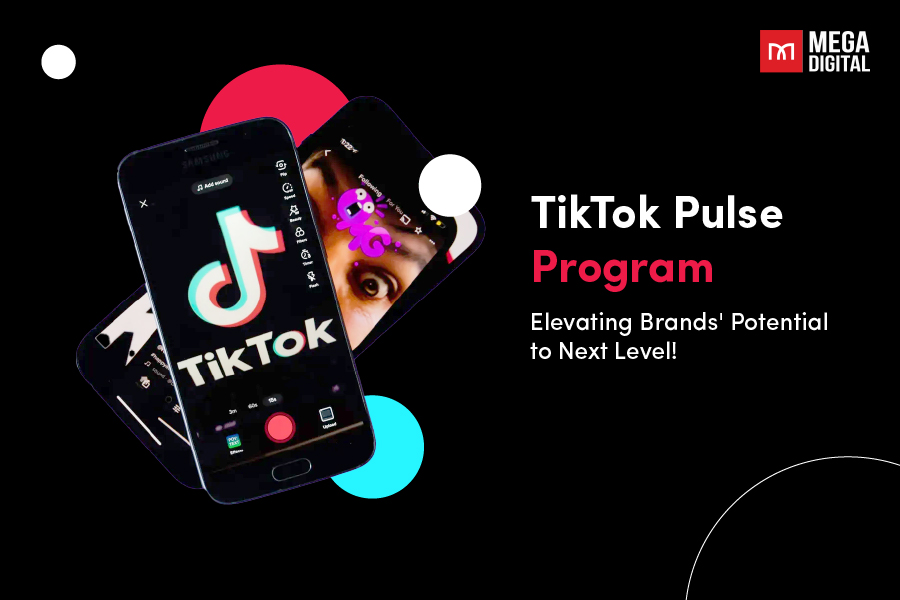Scaling Facebook Ads isn’t just about throwing more money at the platform. It’s a strategic approach that allows you to systematically increase your reach, conversions, and brand awareness while maintaining (or even improving) your return on investment (ROI). In this comprehensive guide, we’ll break down the two main pillars of scaling Facebook Ads: vertical scaling Facebook Ads and horizontal scaling Facebook Ads to unlock new customer segments and, ultimately, achieve your marketing goals on Facebook.
Contents
What is Scaling Facebook Ads?
“Scaling Facebook Ads” is a term of online marketing, particularly related to enhancing and expanding advertising campaigns on the Facebook platform. When you’ve established a successful advertising campaign on Facebook and want to increase your presence or reach more target audiences, you need to undertake the process of “Scaling Facebook Ads.”
This process involves increasing the advertising budget, expanding the target audience, testing more ad variations, and employing various marketing strategies to ensure that your advertising campaign can reach a large number of potential customers, thereby enhancing brand awareness and generating more orders.
Scaling Facebook Ads requires caution and control because you may only save financial resources if done correctly. Therefore, mastering the strategies and continuously monitoring the advertising performance is crucial to ensure you use your resources efficiently when scaling Ads.
When Should You Scale Facebook Ads?
You can scale ads when advertising campaigns are effective and start generating revenue. However, not all ads can be scaled, and expanding the scale does not always guarantee higher profits. When selecting advertising campaigns to scale, prioritize Facebook Ads with a positive Return on Ad Spend (ROAS) metric.
Additionally, it’s advisable to let a new Facebook ad run for at least 3 or 4 days before evaluating its performance. This timeframe is necessary for Facebook to optimize ad delivery for the best results. Note that you should not make changes or edits to the ad during this period. If you do, Facebook will need to restart the optimization process from scratch.
2 Types of Scaling Facebook Ads
Here’s a breakdown of the two main approaches: vertical scaling Facebook Ads and horizontal scaling Facebook Ads.
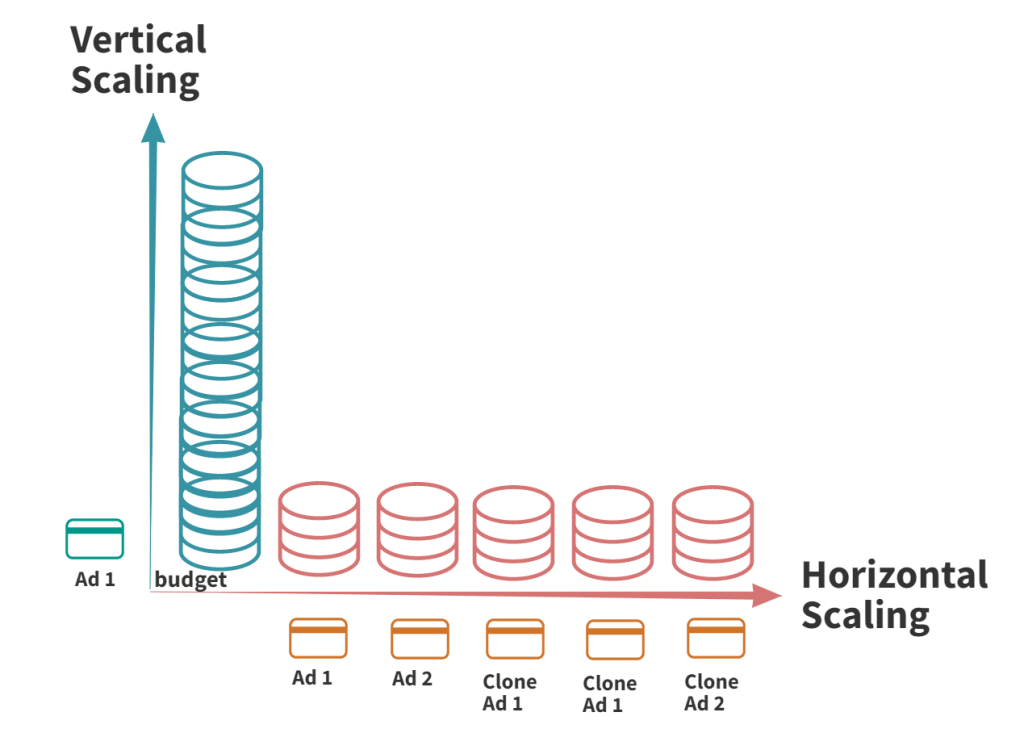
Vertical Scaling Facebook Ads
Vertical scaling involves increasing the budget you allocate to an existing, well-performing campaign. This is a straightforward approach that leverages Facebook’s powerful algorithm to optimize your ad delivery for your chosen audience.
Benefits of Vertical Scaling
- Simpler Management: You only need to manage one campaign, making it easier to track performance.
- Leverages Optimization: Facebook’s algorithm refines delivery based on your existing audience, potentially improving results.
- Faster Results: It’s a quicker way to see an increase in conversions or reach.
Drawbacks of Vertical Scaling
- Diminishing Returns: As you increase your budget, you may reach a point where additional spending yields lower returns.
- Limited Audience Reach: You’re not expanding to new demographics or interests.
Horizontal Scaling Facebook Ads
Horizontal scaling involves reaching a broader audience by creating new ad sets or campaigns.
Benefits of Horizontal Scaling
- Access New Audiences: Expand your reach to potential customers you haven’t targeted before.
- Identify High-Performing Segments: Test different audiences to discover the most profitable ones.
- Reduce Risk of Saturation: Spreads your budget across campaigns, mitigating the risk of diminishing returns in a single campaign.
Drawbacks of Horizontal Scaling
- Management Complexity: Requires more monitoring and optimization across multiple campaigns and ad sets.
- Potential Audience Overlap: Be mindful of targeting similarities to avoid competing against yourself.
- Testing Takes Time: Finding the right new audiences might require some trial and error.
The best approach depends on your campaign goals and current performance. Here’s a general guideline:
- For Immediate Growth: Use horizontal scaling to quickly reach a wider audience.
- For Refining Performance: Use vertical scaling to optimize existing campaigns for better results from your current audience.
Remember that you can often combine both methods for a well-rounded scaling strategy. Closely monitor your campaign performance and adjust your budget allocation and targeting as needed to maximize your return on ad spend.
How to Scale Your Facebook Ads
To scale Facebook ads, you can utilize both vertical scaling and horizontal scaling strategies. Here are some methods for each type:
Vertical Scaling Facebook Ads
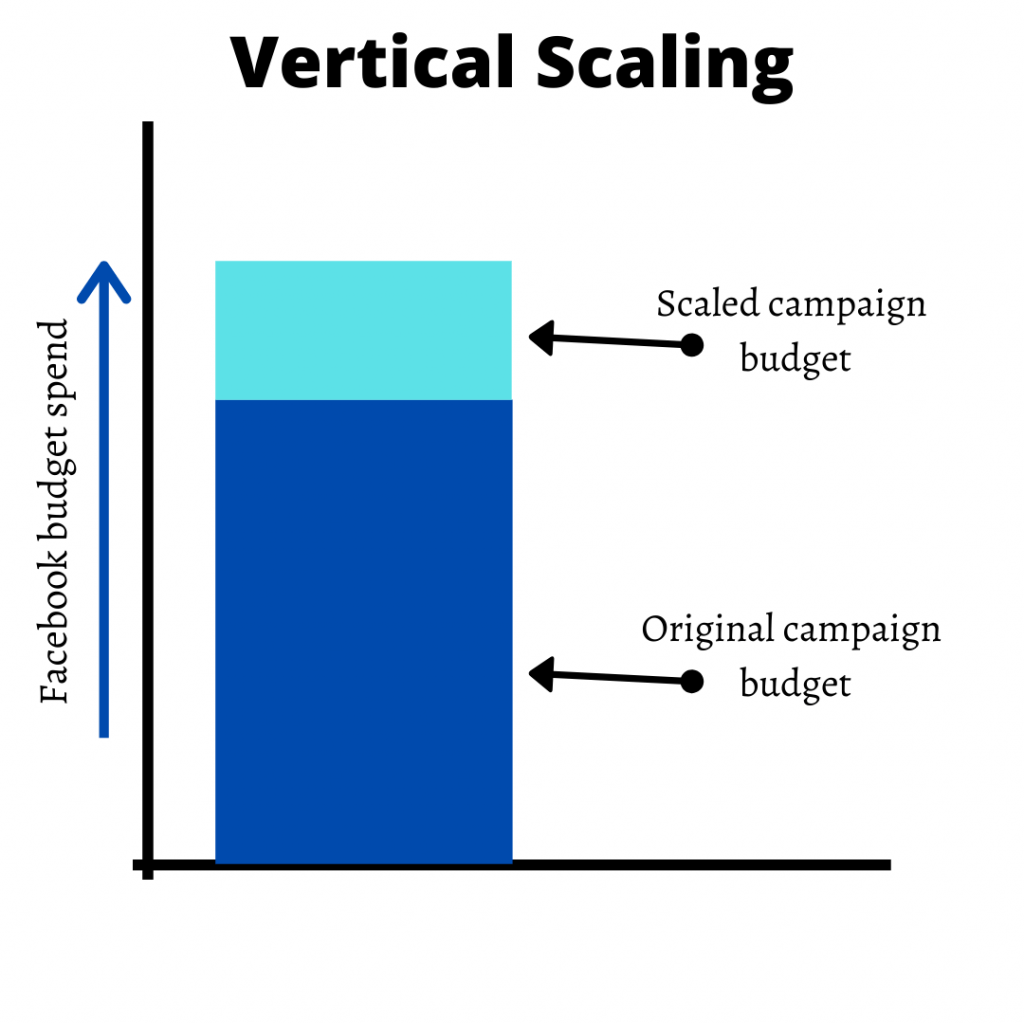
#1. Optimizing Bidding Strategy
The bidding strategy in Facebook advertising is the amount you’re willing to pay to compete with competitors targeting the same audience, helping your ads reach users. One of the simplest ways to optimize your Facebook bidding strategy is by increasing your daily or lifetime budget. Furthermore, effective bidding strategies you can consider include:
- Minimum Cost: Attracts the most purchases within your budget.
- Minimum Cost with Bid Cap: Optimizes ads within your allowed cost range.
- Target Cost: Maintains a stable average cost per purchase as you increase your budget.
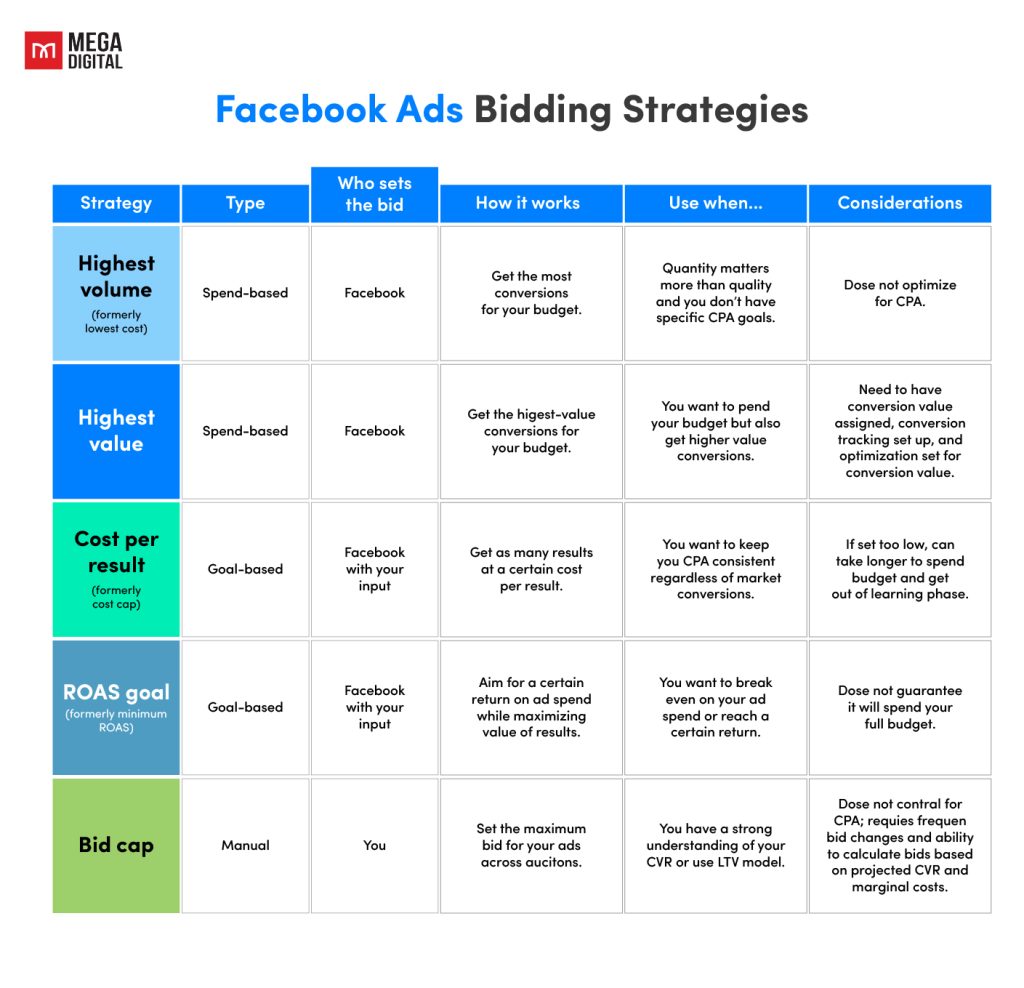
However, in some cases, setting bids too low may result in limited ad distribution and low reach. In such cases, try incrementally increasing your bid until participation in the auction improves.
To implement this Facebook Ads scaling method, you can adjust bid prices automatically within the Facebook Ads Manager. For example, if your ad displays fewer than 100 times the previous day, increase the bid price by an additional 25%.
#2. Create Sales Funnel
Building a sales funnel is an effective way to scale up your Facebook ads. A sales funnel is a series of steps that potential customers must go through before they make a purchase or take a desired action on your website. It helps you optimize your ads and enhance the conversion rate of customers from their initial exposure to making a purchase or taking significant action.
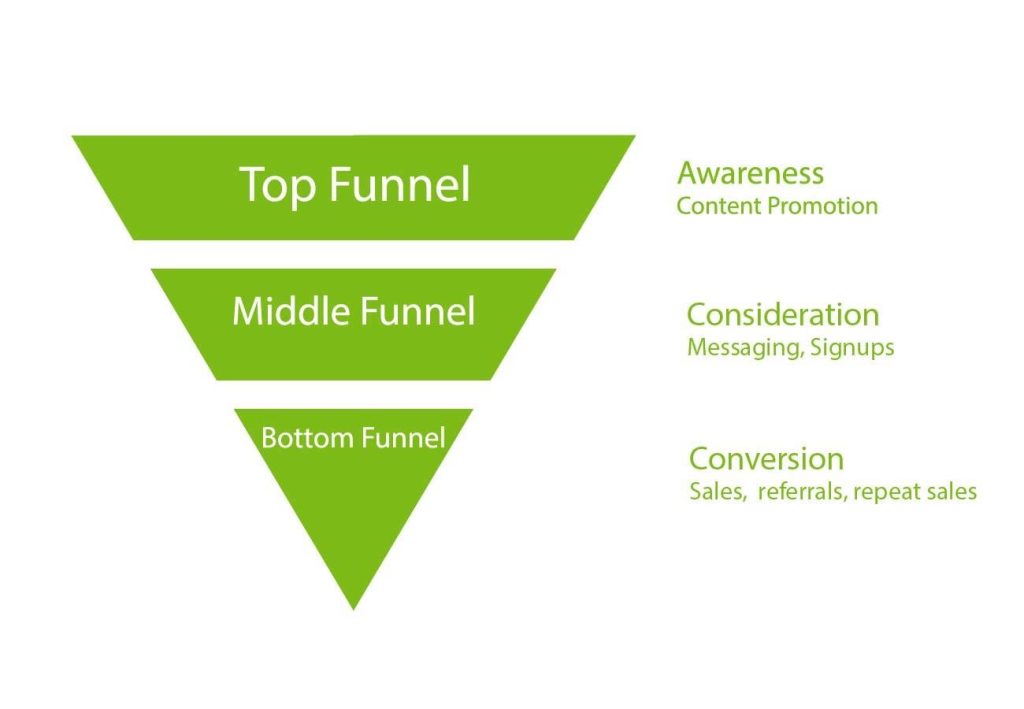
Here are some important steps in building a sales funnel to scale Facebook Ads effectively:
- Target Audience Segmentation: Identify and segment your target audience into groups based on interests, behaviors, and specific characteristics. This helps you create ads and content tailored to each segment.
- Stage 1: Awareness: Create ads and content aimed at making potential customers aware of your brand. Use images, videos, or introductory content to grab their attention.
- Stage 2: Consideration: Once customers are aware of your brand, provide them with more useful content such as blog posts, tutorial videos, or product information. As they continue to engage with this content, you can redirect them to your website for more details.
- Stage 3: Action: This is the stage where you encourage customers to take specific actions such as making a purchase, signing up, or contacting you. Use ads containing offers, discount codes, or call-to-action statements to encourage customers to complete their purchases.
Building a sales funnel helps you not only save financial resources but also enhances the effectiveness of your Facebook Ads campaigns by ensuring that you’re reaching and converting potential customers logically through each stage of their journey.
#3. Refine Targeting
Refining your Facebook audience targeting is a powerful tool to squeeze more juice out of your existing campaigns. By analyzing the demographics, interests, and behaviors of your winning audience, you can tighten your targeting and exclude irrelevant users who aren’t converting. This leads to a more efficient use of your budget and potentially improves your key metrics like cost-per-acquisition (CPA) and return on ad spend (ROAS).
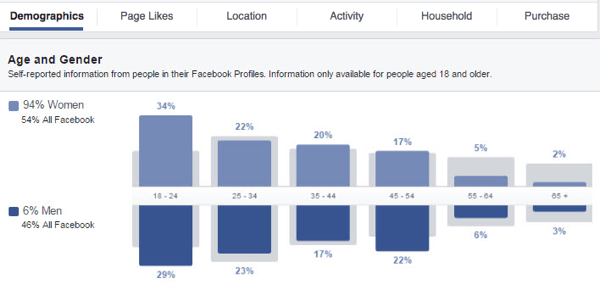
#4. Conversion Optimization
Facebook Ads offers a powerful feature called “conversion optimization” that helps you prioritize specific actions users take on your website or app. By choosing the conversion event most valuable to your business goals, you can significantly improve the effectiveness of your campaigns and maximize your return on ad spend (ROAS).
How to Set Up Conversion Optimization:
- Campaign Objective: During campaign creation, choose an objective focused on conversions (e.g., Conversions, Lead Generation).
- Optimization and Tracking: In the campaign settings, locate the “Optimization for Ad Delivery” section. Here, you’ll be able to select the specific conversion event you want to prioritize.
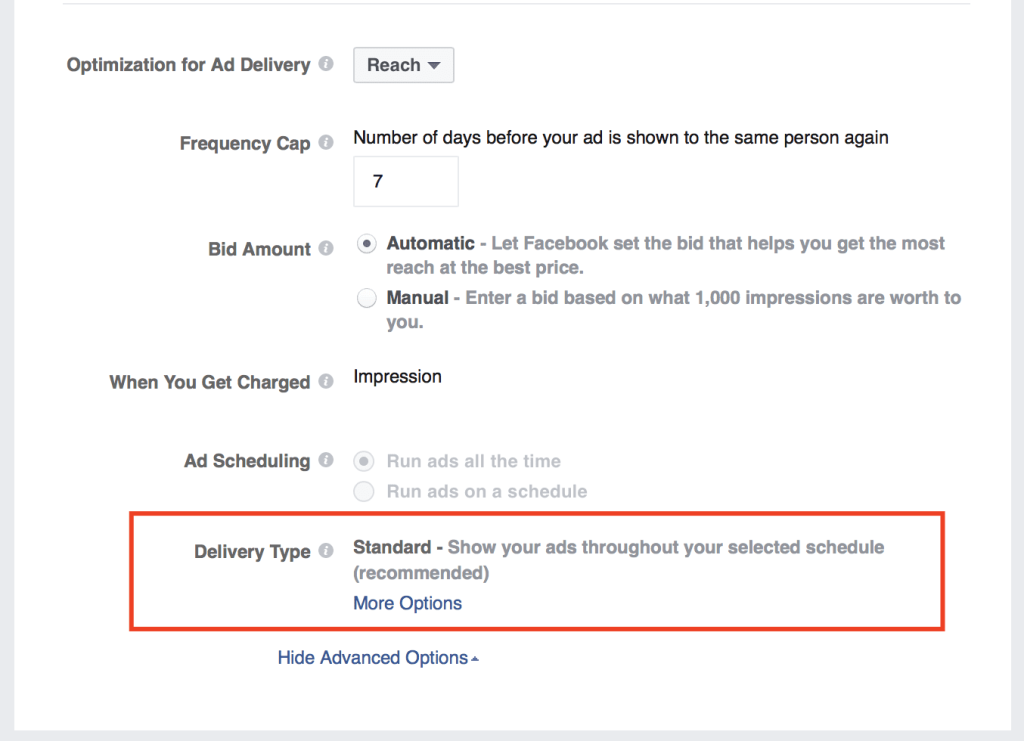
- Pixel and Conversion Setup: Ensure you have the Facebook Pixel properly installed on your website and that your desired conversion event is tracked accurately.
#5. Test Multiple Ad Creatives
A/B testing ad creatives allows you to refine your message and visuals, potentially unlocking even better results from your campaigns. The beauty of A/B testing lies in its flexibility. You can experiment with various elements of your ad creatives:
- Headlines: Craft different headlines that highlight unique selling points or evoke different emotions.
- Copy: Test variations in the ad copy, focusing on benefits, urgency, or storytelling.
- Visuals: Experiment with images, videos, or carousels. Consider different styles, colors, and compositions.
- Call to Actions (CTAs): Test different CTAs like “Shop Now,” “Learn More,” or “Download.”
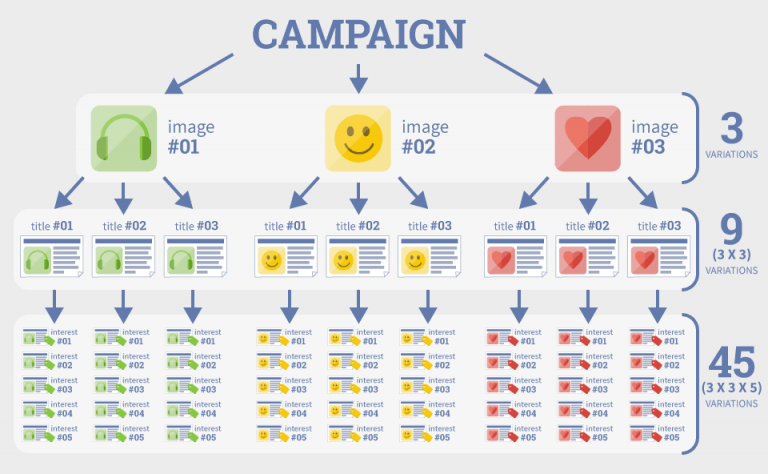
Horizontal Scaling Facebook Ads
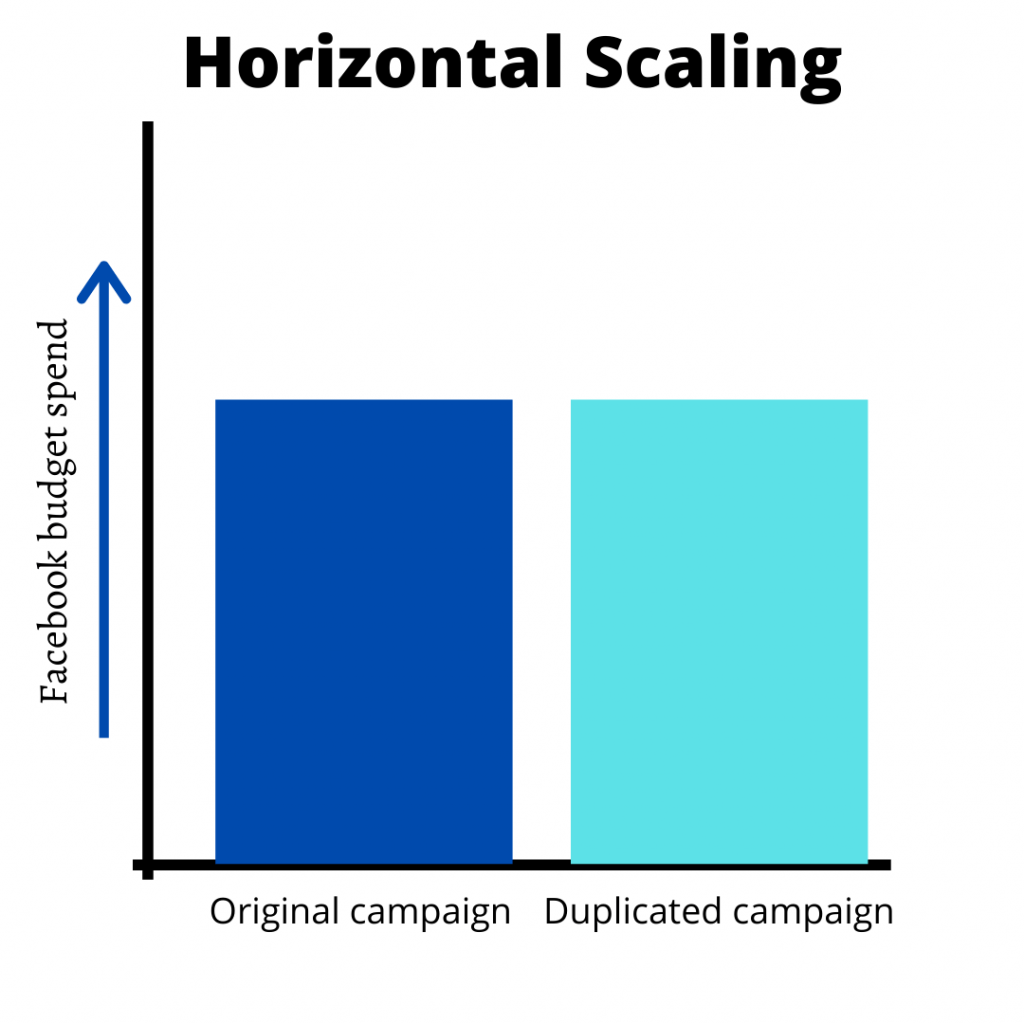
#7. Duplicate winning ad sets
Duplicating winning ad sets is a powerful horizontal scaling technique for Facebook Ads. It allows you to leverage the success of your existing campaigns and reach a broader audience while minimizing risk.
Benefits of Duplicating Winning Ad Sets:
- Faster Scaling: You don’t need to build new campaigns from scratch. Duplication allows you to quickly expand your reach while maintaining a solid foundation.
- Proven Performance: By copying winning ad sets, you’re replicating elements that have already proven effective for your target audience.
- Reduced Risk: Duplication minimizes the risk associated with entirely new campaigns and untested creatives.
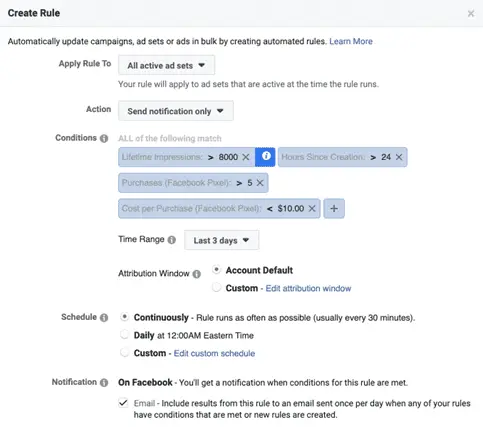
Monitor the performance of your duplicate ad sets alongside your originals. Analyze key metrics like reach, impressions, and conversions to see how the adjustments impact results.
Furthermore, don’t be afraid to experiment with different adjustments across duplicates. This allows you to discover the most effective ways to expand your reach while maintaining performance.
#7. Leverage Lookalike Audiences
Facebook Lookalike Audience feature allows you to target new users who share similar characteristics with your existing high-value customers. This significantly increases your chances of reaching users likely to convert, ultimately driving better results for your campaigns.
Facebook allows you to create multiple Lookalike Audiences based on the same source audience but with varying “percentages.” These percentages represent how closely the new audience should resemble your source audience:
- 1% Lookalike Audience: This is the most similar group and often has the highest conversion potential but also the smallest reach.
- 5% Lookalike Audience: This strikes a balance between reach and similarity. It offers a broader audience with a good chance of conversion.
- 10% Lookalike Audience: This Lookalike Audience has the widest reach but includes users with less similarity to your source audience. It might be suitable for top-of-funnel awareness campaigns.
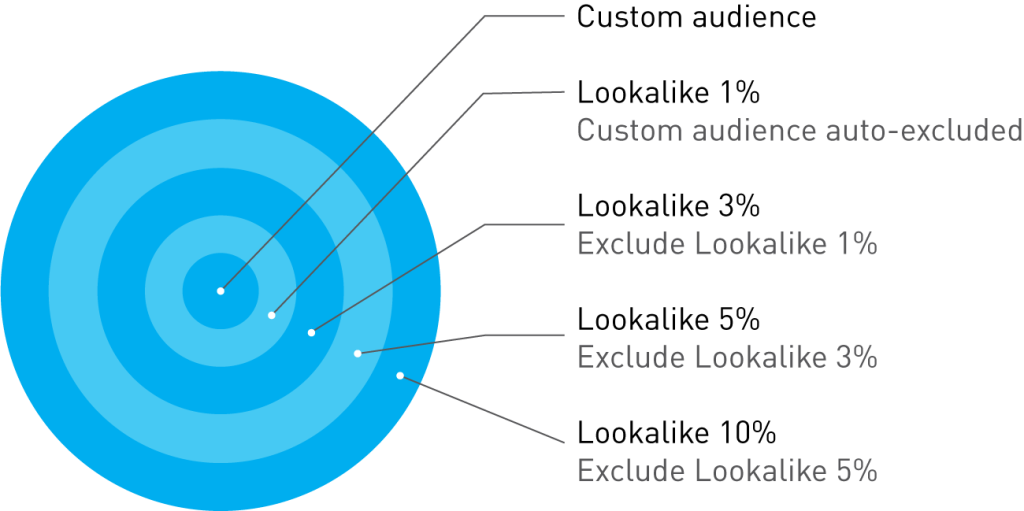
By creating Lookalike Audiences with different percentages, you can implement a tiered targeting strategy:
- Start with the 1% Lookalike Audience: Test this highly similar group to see how they respond to your ads.
- Expand with the 5% Lookalike Audience: If the 1% performs well, consider the 5% for broader reach while maintaining a good conversion potential.
- Utilize the 10% Lookalike Audience: Once you’ve established success with the tighter audiences, explore the 10% for even broader reach, potentially for brand awareness campaigns.
For even better results, consider refining your source audience before creating Lookalike Audiences. Focus on high-value customer segments or website visitors who exhibited strong buying intent.
#8. Explore New Interest Targeting
By venturing beyond your initial targeting parameters, you can reach new audiences with relevant interests who might be interested in your product or service. Here’s a breakdown of how to explore new interest targeting effectively:
Facebook Ads Manager provides a vast library of targeting options, including demographics and interests. Here’s how to find new possibilities:
- Utilize the Search Bar: Start by typing in keywords related to your product or service. Facebook will suggest relevant interests, demographics, and behaviors you can target.

- Browse Suggested Interests: Facebook recommends interests based on your existing targeting selections. Explore these suggestions and consider incorporating relevant ones.
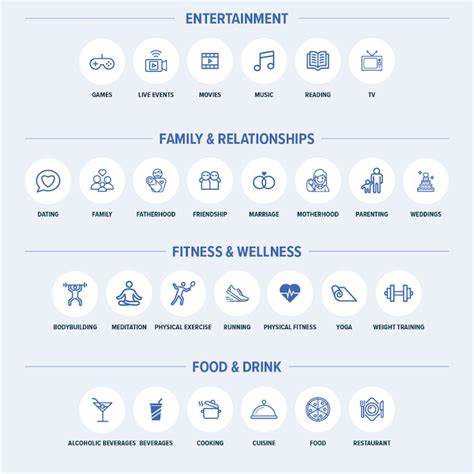
- Analyze Competitor Targeting: Research your competitors’ social media presence and see what interests they target. This can provide valuable insights into potential audiences for your campaigns.

#9. Test Different Placement Options
Facebook offers various ad placement options, including the News Feed, Instagram, Audience Network, and Messenger. Experimenting with different placements can help you identify the most effective ones for your specific campaign objectives. You can create separate ad sets for each placement and allocate budgets accordingly.
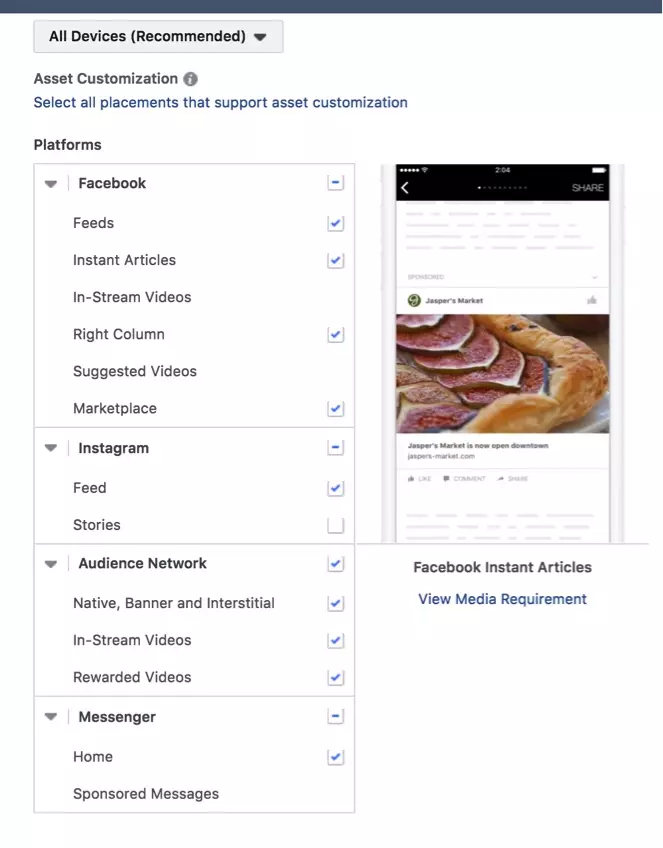
Final words
Mega Digital hopes the article has helped you understand some effective methods to scale Facebook Ads in 2024. I wish you success in applying these methods to your business’s Facebook advertising campaigns. If you encounter any difficulties during the scaling process, please don’t hesitate to contact the Mega Digital team. Mega Digital is always ready to support and assist you.







